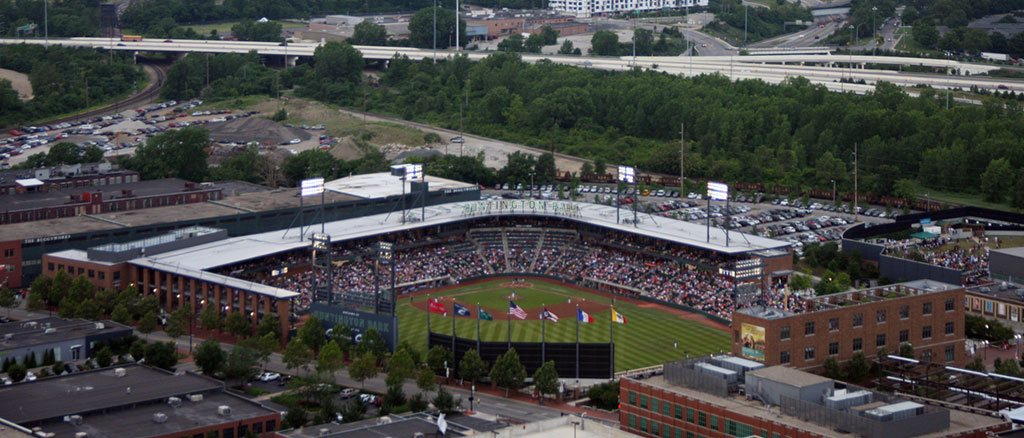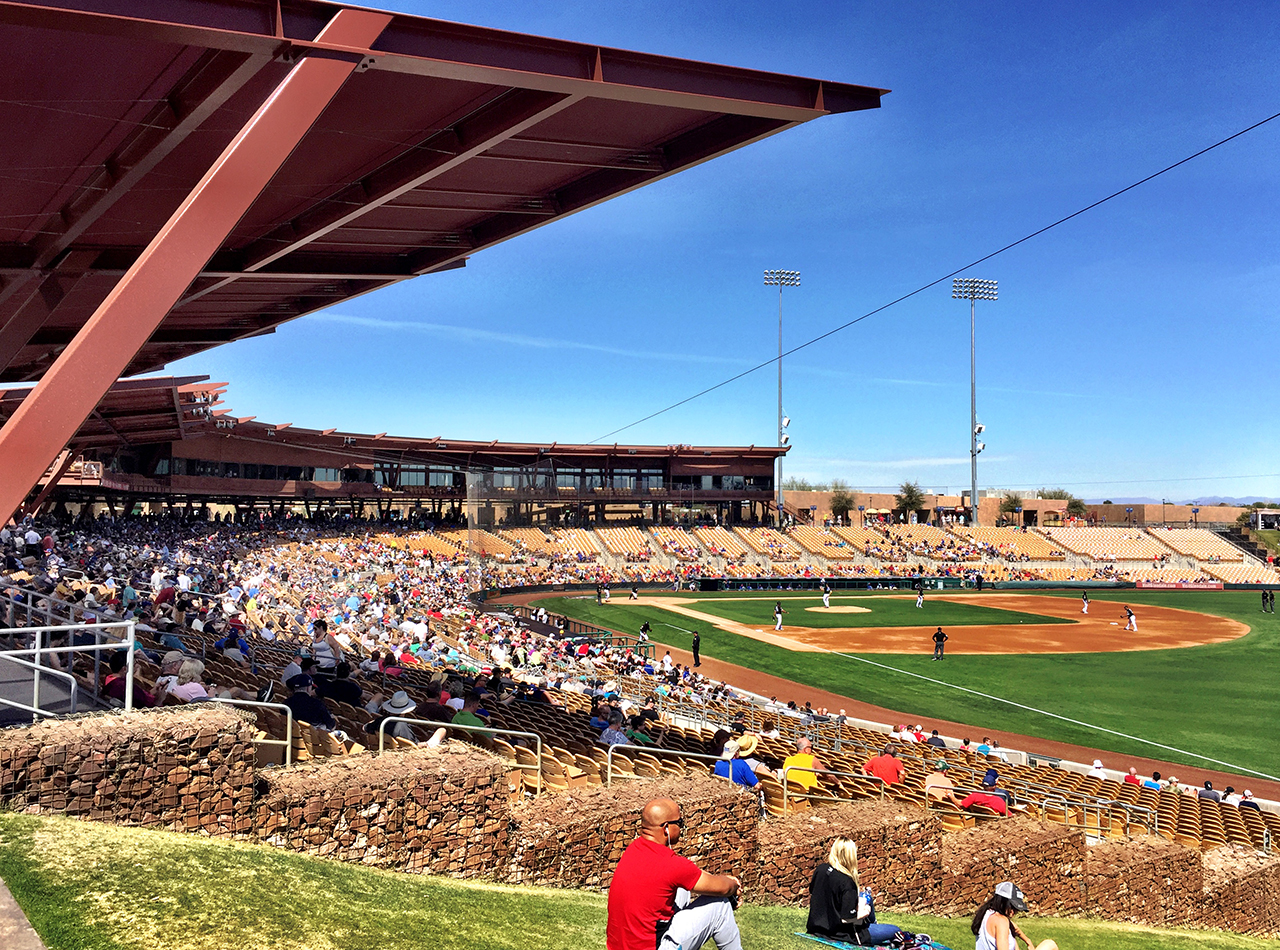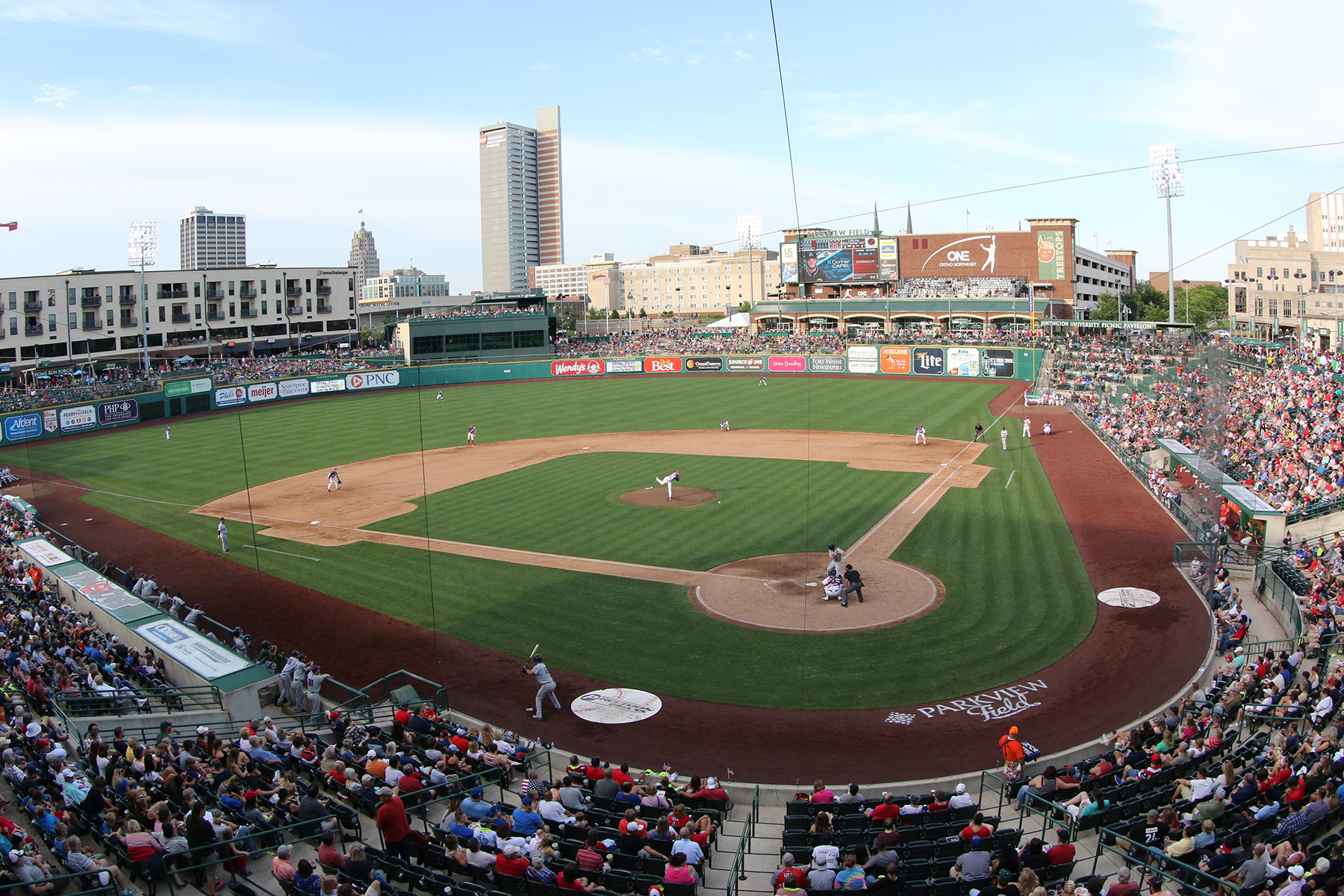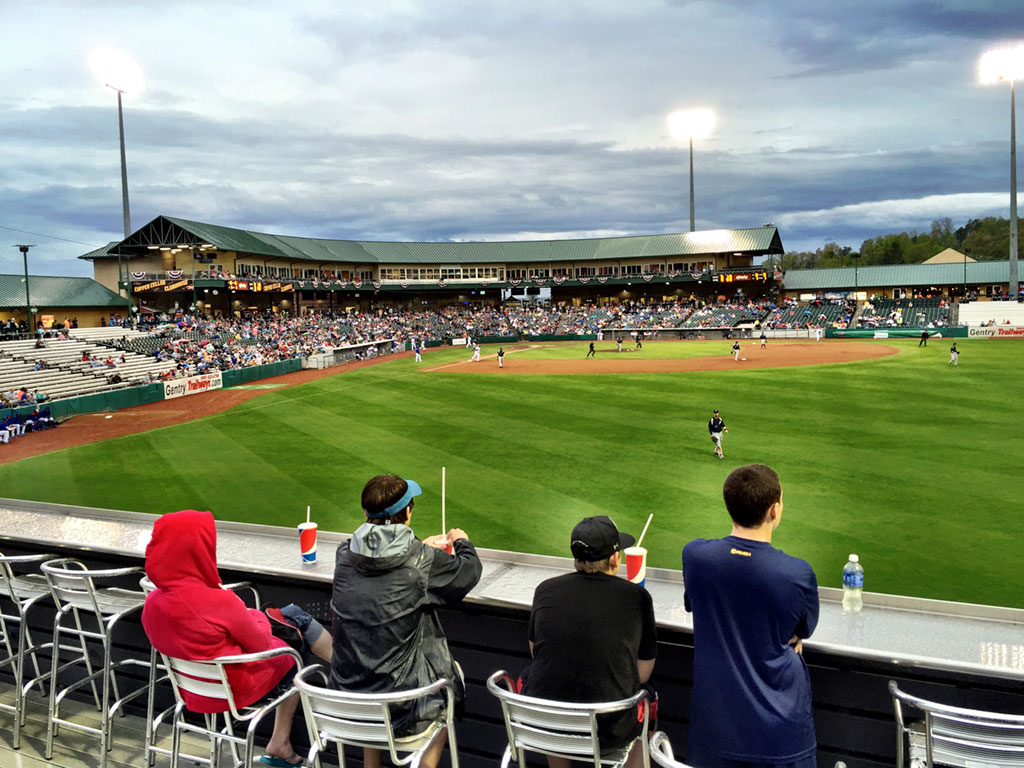The backbone of any successful MLB franchise is a successful player-development system. And these days successful player development means strong MiLB and spring-training facilities. We rank MLB organizations by the quality of their player-development facilities, as updated for 2019.
There are teams with some definite player-development philosophies, like the Atlanta Braves, who prefer owning and operating their affiliates, and the Chicago White Sox, who centralize affiliates for the most part in North Carolina and the South. Others, it seems, don’t have much of a philosophical bent and evaluate each affiliate separately. We know every MLB team wants the perfect player-development system, but perfection is hard to achieve. Hence these ratings, which were first introduced in 2018 and have been updated for 2019.
No black-box methodology here. We asked former GMs, broadcasters past and present, and journalists with expertise in specific leagues to rank facilities based on four criteria: player facilities, fan experience, proximity and stability. Player facilities include clubhouses, workout spaces, quality of batting/pitching cages, meeting spaces and cafeteria/nutritional services. The fan experience covers the physical condition of the ballpark, concessions and in-game entertainment. Proximity covers to what extent players are shuffled around; being closer to the MLB parent and other MiLB affiliates is always a good thing. Finally, stability covers the length of the current affiliation deal and expectations of the future. We cover every level of MiLB affiliation (including MiLB teams owned by the parent), as well as spring-training facilities. Spring complexes are increasingly used as year-round facilities: after spring training ends, complexes are used for rehabs, extended-spring workouts and potentially MiLB play, as well as hosting Rookie-league games.
Each level of play was assigned a potential score in each category, with AAA and spring-training facilities receiving the highest number of potential points, decreasing by level of play. There are two teams with two Rookie-level affiliates—the Reds and the Royals—and that commitment to development is reflected in the scores. We asked our experts to limit their responses to ballparks and spring facilities they’ve actually visited, and their responses are reported here in aggregated form. No single opinion dominates any ranking, as multiple feedbacks are reflected in every instance.
As noted, we present the rankings from bottom to top, with daily stories through Friday.
18. Baltimore Orioles
2019 score: 152 2018 score: 151 (16th)
The biggest strength of the Baltimore Orioles player-development system is proximity, as the team has built a nucleus of affiliates that have been in the system for years and that play within a close distance to Baltimore. What lowers the organization’s score is the player facilities and fan experience ratings, particularly at the top three minor-league levels, as the Norfolk Tides (Class AAA; International League), Bowie Baysox (Class AA; Eastern League), Frederick Keys (High A; Carolina League) and the Aberdeen IronBirds (Short Season A; NY-Penn League) all play in functional but not great ballparks. Ed Smith Stadium (shown above) is the true standout in the system, as renovations completed in 2011 have turned that ballpark into one of spring training’s best for fans and players alike. The organizational numbers went up slightly after more offseason upgrades to Arthur W. Perdue Stadium, home of the Delmarva Shorebirds (Low A; Sally League), which includes a new wraparound concourse and more.
| Level | Player Facilities | Fan Experience | Proximity | Stability | Potential |
| AAA (Norfolk Tides) | 6 | 6 | 9 | 8 | 10 |
| AA (Bowie Baysox) | 4 | 5 | 9 | 9 | 9 |
| High A (Frederick Keys) | 5 | 5 | 8 | 8 | 8 |
| Low A (Delmarva Shorebirds) | 6 | 6 | 7 | 7 | 7 |
| SSA (Aberdeen IronBirds) | 3 | 3 | 4 | 4 | 4 |
| ST | 8 | 8 | 6 | 8 | 8 |
| Totals | 32 | 33 | 43 | 44 | 46 |
| Total Score: | 152 |
16 (t). Cleveland Indians
2019 score: 154 2018 score: 155 (12th)
At a time when multiple organizations significantly upgraded their player-development facilities, the Cleveland Indians stood pat—and as a result slipped in the overall rankings. The Indians have a farm system largely built around Ohio teams with strong fan experiences and first-rate player facilities. Any ranking topped by Goodyear Ballpark, the Columbus Clippers (Class AAA; Pacific Coast League) and the Akron RubberDucks (Class AA; Eastern League) is off to a great start. We’re now to the point in our ranking to where only a few points are between entries.
| Level | Player Facilities | Fan Experience | Proximity | Stability | Potential |
| AAA (Columbus Clippers) | 9 | 10 | 10 | 10 | 10 |
| AA (Akron RubberDucks) | 8 | 8 | 9 | 9 | 9 |
| High A (Lynchburg Hillcats) | 6 | 4 | 6 | 5 | 8 |
| Low A (Lake County Captains) | 5 | 5 | 6 | 7 | 7 |
| SSA (Mahoning Valley Scrappers) | 2 | 2 | 4 | 3 | 4 |
| ST | 7 | 6 | 5 | 8 | 8 |
| Totals | 37 | 35 | 40 | 42 | 46 |
| Total Score: | 154 |
16 (t). Los Angeles Dodgers
2019 score: 154 2018 score: 154 (13th)
Again, standing pat didn’t serve the Los Angeles Dodgers very well in our rankings. Having both the Oklahoma City Dodgers (Class AAA; Pacific Coast League) and Tulsa Drillers (Class AA; Texas League) in the mix gives the Dodgers two farm clubs that play in solid ballparks within a close distance of each other. The team has a stable relationship with the Rancho Cucamonga Quakes (High A; California League), and Camelback Ranch-Glendale (shown above) earned good marks for spring training. One slight setback is that the Great Lakes Loons (Low A; Midwest League) play in a location that is fairly remote in comparison to the rest of the organization. That said, the Loons can be given credit for making Dow Diamond a good ballpark for both fans and players.
| Level | Player Facilities | Fan Experience | Proximity | Stability | Potential |
| AAA (OKC Dodgers) | 9 | 9 | 7 | 9 | 10 |
| AA (Tulsa Drillers) | 8 | 8 | 7 | 8 | 9 |
| High A (Rancho Cucamonga Quakes) | 6 | 5 | 7 | 7 | 8 |
| Low A (Great Lakes Loons) | 6 | 6 | 4 | 7 | 7 |
| Rookie (Ogden Raptors) | 2 | 3 | 3 | 4 | 4 |
| ST | 7 | 7 | 7 | 8 | 8 |
| Totals | 38 | 38 | 35 | 43 | 46 |
| Total Score: | 154 |
15. San Diego Padres
2019 score: 156 2018 score: 143 (23rd)
Adding Amarillo as an affiliate in a brand-new ballpark, Hodgetown, considerably boosted the rankings for the Padres. First, replacing San Antonio’s Wolff Stadium was a boost both for player and fan facilities. Second, it added to the proximity level: Amarillo is a little over three hours from El Paso, home of the Padres’ Triple-A affiliate. In fact, the El Paso Chihuahuas (Class AAA; Pacific Coast League) and Fort Wayne TinCaps (Low A; Midwest League) can claim to play in two of the best ballparks at their respective levels (Fort Wayne’s Parkview Field is shown above) and the Lake Elsinore Storm (High A; California League) are one of the model franchises in their league.
| Level | Player Facilities | Fan Experience | Proximity | Stability | Potential |
| AAA (El Paso Chihuahuas) | 9 | 9 | 8 | 9 | 10 |
| AA (Amarilo Sod Poodles) | 8 | 8 | 7 | 7 | 9 |
| High A (Lake Elsinore Storm) | 7 | 7 | 7 | 8 | 8 |
| Low A (Fort Wayne TinCaps) | 7 | 7 | 4 | 7 | 7 |
| SSA (Tri-City Dust Devils) | 3 | 2 | 1 | 2 | 4 |
| ST | 7 | 7 | 7 | 8 | 8 |
| Totals | 41 | 40 | 34 | 41 | 46 |
| Total Score: | 156 |
14. Texas Rangers
2019 score: 158 2018 score: 151 (16th)
Another team moving up in the rankings thanks to an affiliate shift, the Rangers changed Triple-A affiliates from Round Rock to Nashville. While having the Round Rock Express as a farm team is a good fit for a Texas team, Nashville has plenty of advantages as an affiliate, including a newer ballpark and player facilities and a stable affiliation—something the Rangers did not have in 2018. By owning both the Down East Wood Ducks (High A; Carolina League) and Hickory Crawdads (Low A; Sally League), the Rangers give themselves considerable stability at those levels. The Frisco RoughRiders (Class AA; Texas League) are a model franchise at any level, and the Spokane Indians (Short Season A; Northwest League) make for a good short-season affiliate.
| Level | Player Facilities | Fan Experience | Proximity | Stability | Potential |
| AAA (Nashville Sounds) | 9 | 10 | 8 | 9 | 10 |
| AA (Frisco RoughRiders) | 8 | 9 | 9 | 9 | 9 |
| High A (Down East Wood Ducks) | 6 | 5 | 6 | 8 | 8 |
| Low A (Hickory Crawdads) | 4 | 4 | 5 | 6 | 7 |
| SSA (Spokane Indians) | 3 | 4 | 2 | 4 | 4 |
| ST | 8 | 7 | 7 | 8 | 8 |
| Totals | 38 | 39 | 37 | 44 | 46 |
| Total Score: | 158 |
12 (t). Chicago Cubs
2019 score: 159 2018: 159 (9th)
At a time when other MLB teams are markedly improving, not making changes means falling behind—and that’s what happened to the Cubs. No changes or improvements for 2019, and that’s pushed the team down in our listings. The Chicago Cubs have an interesting farm system when it comes to facilities; if only they weren’t scattered across the country. Individually, you have some great facilities in the form of Principal Park, home of the Iowa Cubs (Class AAA; Pacific Coast League); Smokies Stadium, home of the Tennessee Smokies (Class AA; Southern League) (shown above); TicketReturn.com Field, home of the Myrtle Beach Pelicans (High A; Carolina League), and Four Winds Field, home of the South Bend Cubs (Low A; Midwest League). Too bad they’re not closer together.
| Level | Player Facilities | Fan Experience | Proximity | Stability | Potential |
| AAA (Iowa Cubs) | 8 | 8 | 9 | 10 | 10 |
| AA (Tennessee Smokies) | 8 | 8 | 6 | 8 | 9 |
| High A (Myrtle Beach Pelicans) | 7 | 7 | 6 | 7 | 8 |
| Low A (South Bend Cubs) | 6 | 6 | 7 | 6 | 7 |
| SSA (Eugene Emeralds) | 3 | 3 | 2 | 3 | 4 |
| ST | 8 | 8 | 7 | 8 | 8 |
| Totals | 40 | 40 | 37 | 42 | 46 |
| Total Score: | 159 |
12 (t). Detroit Tigers
2019 score: 159 2018 score: 157 (11th)
With renovations in Erie adding some points in the Double-A category, the Detroit Tigers basically stayed in the same spot, moving down a single level. UPMC Park, home of the Erie SeaWolves (Class AA; Eastern League) will see changes for 2019, including a new playing service specifically requested by the Tigers, as well as other fan upgrades for 2020. The Detroit Tigers / Toledo Mud Hens (Class AAA; International League) partnership is one of the most mutually beneficial in all of baseball, and it really represents how the Tigers have put together their player development facilities system. The emphasis here is on stability and proximity: the Tigers don’t often change affiliates (and the last time they did, it was because there was an opening for their NY-Penn League team to move from a small city in the form of Oneonta to a former Class AA market and ballpark in Norwich, Connecticut). Upgrades to Publix Field at Joker Marchant Stadium (shown above) have benefited both the spring-training experience and the High-A affiliate, the Lakeland Flying Tigers (High A; Florida State League).
| Player Facilities | Fan Experience | Proximity | Stability | Potential | |
| AAA (Toledo Mud Hens) | 9 | 10 | 10 | 10 | 10 |
| AA (Erie SeaWolves) | 6 | 6 | 8 | 9 | 9 |
| High A (Lakeland Flying Tigers) | 7 | 6 | 6 | 8 | 8 |
| Low A (West Michigan Whitecaps) | 6 | 6 | 6 | 7 | 7 |
| SSA (Connecticut Tigers) | 3 | 3 | 3 | 4 | 4 |
| ST | 7 | 6 | 5 | 8 | 8 |
| Totals | 38 | 37 | 38 | 46 | 46 |
| Total Score: | 159 |







